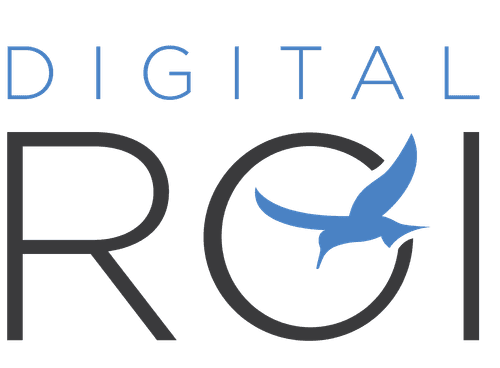Oct 18, 2024

Company-First vs. Customer-First Journey
Introduction
The company-first journey and the customer-first journey are two popular methods that frequently come up in the context of business initiatives. Every approach has advantages and disadvantages of its own that affect a business's overall performance and direction. In order to find out which strategy would be more beneficial in today's competitive economy, let's examine both in depth.
Company-First Journey
The Company-First journey prioritizes the goals, strengths, and resources of the company. This strategy emphasizes profitability and efficiency while utilizing internal knowledge to stimulate progress. This strategy frequently prioritizes the demands of the business over those of its customers.
Characteristics
Listening to Inside Voices
The business's goal, purpose, and core skills are the foundation for the strategy. Using these natural characteristics to create an edge over others is the main objective. The company prioritizes its key capabilities and puts them at the center of its operations and decision-making process.
Product-oriented Planning
The technological skills and assets of the company are the driving forces behind growth. This strategy makes use of the company's own resources, knowledge, and distinct technology. Product plans are aligned with the company's advantages, delivering premium products that are hard for competitors to duplicate.
Effectiveness and Financial Perks
Streamlining operations to lower expenses and boost profit margins is a major goal. Frequently, this entails making investments in technology that raise output and streamline operations. The goal is to develop lean procedures that reduce waste, maximize resource use, and improve efficiency in operations.
Control of the Marketplace
Strategies are developed to beat competition and capture a sizable portion of the market. Gaining a leading position in the sector is the aim. Exceptional offerings for goods, cost control, or cutting-edge technology capabilities are the foundation of competitive advantages.
Benefits
Creativity and Expertise
Businesses can create innovative goods and services that take advantage of their distinct skills by concentrating on their own internal assets. By using this strategy, businesses can become innovators in their sector and create trends rather than just following them.
Command over the Marketplace
Companies can achieve market dominance and high market presence in particular niches by adopting a targeted approach. A business can create industry norms and manipulate the economy to its benefit when it leads the market.
Effectiveness of Operations
Process simplification reduces costs significantly and boosts profitability. Optimizing utilization of resources assures maximum company efficiency. Reductions in costs brought about by improved operations might be put back into new projects or growth initiatives.
Challenges
Disconnect with Audience
An internal focus could cause a gap in the requirements and tastes of the consumer. Without considering consumer demand, products or services may not successfully connect with the intended market. Long-term success may be impacted by low loyalty and satisfaction with consumers due to a lack of customer-centricity.
Perspective of the Company
Businesses could be seen as having more of an interest in themselves than in their consumers. Brand loyalty and trust may suffer as a result. Potential clients may be driven away, and connections with current ones harmed by an image of impersonality or greed.
Challenges with the Ability to Adapt
Businesses that place an excessive amount of emphasis on their internal capabilities may find it difficult to adjust to shifting consumer demands or market conditions. A loss of credibility and position in the market might come from being rigid amidst changes in the market.
Customer-First Journey
The Customer-First Journey is a strategy framework that puts the customer at the center of every company decision. This practice focuses on understanding and meeting customers' wants, improving their experiences, and developing lasting connections.
Characteristics
Customer-Oriented Approach
The strategy relies on an in-depth knowledge of the customer's needs, tastes, and behaviors. Businesses invest in research on markets, customer input, and data analytics to better understand their target audience. Decisions are made with the consumer in mind, ensuring their needs are satisfied.
Market-Oriented Approach
Customer feedback and demand influence the development of products and services. This method ensures that the offers are appropriate, beneficial, and intriguing to the intended audience. Constant connection with consumers assists in recognizing upcoming trends and tailoring offerings effectively.
Market-Oriented Approach
Customer feedback and demand influence the development of products and services. This method ensures that the offers are appropriate, beneficial, and intriguing to the intended audience. Constant connection with consumers assists in recognizing upcoming trends and tailoring offerings effectively.
Seamless User Experience
A flawless and enjoyable customer experience is the main objective. This includes intuitive interfaces, personalized offerings, and prompt customer service. Every touchpoint, from the initial inquiry to post-purchase assistance, is intended to improve the buyer's experience and create positive outcomes.
Productive Problem-Solving
Understanding and resolving consumer problems before they worsen is critical. Continuous updates, dedicated assistance teams, and effective complaint-handling methods are all examples of proactive problem-solving strategies. Ensuring client satisfaction at every point of the journey contributes to trust and commitment over time.
Benefits
Enhanced Loyalty from Consumers
Customers who are satisfied with a brand are more inclined to return and promote it to others. High client loyalty leads to recurring business and beneficial recommendations. Loyal customers also have greater value over a lifetime, which adds significantly to future earnings.
Market Adaptability
Businesses can respond swiftly to shifting customer demands and market developments. This agility aids in being effective and competitive in an ever-changing market scenario. Regular feedback loops guarantee that the organization remains responsive to customers' needs and can adjust strategy as needed.
Improved Brand Image
A customer-centric strategy improves the brand's credibility and trust. Companies that prioritize customers frequently have a higher public reputation and authority. Positive customer experiences generate favorable feedback and testimonials, which help to build the brand's image.
Challenges
Demands High Cost & Labour Investment
Implementing a customer-first strategy necessitates substantial investment in surveys, support for customers, and tailored advertising. These initiatives can be time-consuming and costly in terms of resources. Ensuring high levels of satisfaction with clients frequently requires ongoing development and innovation, which can drain resources.
Difficult Execution
Integrating client feedback into all elements of a business can be challenging. It necessitates cooperation among departments and a cultural shift toward customer service. Maintaining consistency in the consumer experience across several touchpoints and platforms can be difficult.
Balancing Both Approaches
Many successful businesses strike a balance between the two approaches. They use the strengths of a company-first strategy to preserve operational efficiency and profitability while embracing a customer-first mindset to assure satisfaction and loyalty. This balanced strategy can lead to long-term growth and a competitive advantage in the market.
One such example of a brand is Tata Motors. Tata Motors, one of India's premier automobile brands, illustrates how a corporation may effectively navigate both the Company-First and Customer-First approaches. Tata Motors has achieved long-term growth and market dominance by exploiting its internal capabilities and focusing on consumer needs. Few characteristics are as follows:
Creative, yet Customer-Oriented
Tata Nexon EV: The invention of the Tata Nexon EV shows how Tata Motors exploits its technology capabilities while prioritizing customer requirements. The Nexon EV combines innovative technology for electric cars with characteristics tailored to the current, environmentally concerned Indian consumer.
Strong Brand Image and Customer Trust
CSR Programs: Tata Motors participates in a variety of corporate social responsibility (CSR) activities, including ecologically friendly schemes and charitable initiatives. These actions improve their brand reputation and increase customer trust, which aligns with their commitment to the welfare of society.
Optimized Operations and Customer Benefits
Affordable Quality Vehicles: Tata Motors' innovative production methods allow for the creation of high-quality vehicles at reasonable prices. This combination assures that customers get good value for money while the business has healthy revenue margins.
Strategic Market Flexibility
EV Charging Facilities: Recognizing the value of infrastructure in the adoption of electric vehicles, Tata Motors works with other companies to build the EV charging network across India. The scheme meets a vital client requirement while promoting their EV products.
